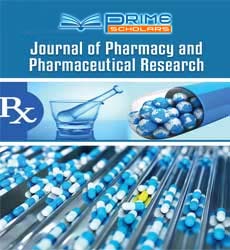Opinion - (2022) Volume 6, Issue 6
Initiation of Long-Acting Bronchodilator Treatment at an Early Stage of COPD can Slow Down Disease Progression
Yang Wu*
Department of Pharmacy, University of Peking, China
*Correspondence:
Yang Wu,
Department of Pharmacy, University of Peking,
China,
Email:
Received: 30-Nov-2022, Manuscript No. IPIPR-23-15433;
Editor assigned: 02-Dec-2022, Pre QC No. IPIPR-23-15433 (PQ);
Reviewed: 16-Dec-2022, QC No. IPIPR-23-15433;
Revised: 21-Dec-2022, Manuscript No. IPIPR-23-15433 (R);
Published:
28-Dec-2022, DOI: 10.21767/IPIPR.22.6.28
INTRODUCTION
Chronic Obstructive Pulmonary Disease (COPD) is a respiratory disease
characterized by chronic airway inflammation, deterioration
of lung function over time, and progressive impairment of quality
of life. COPD is associated with high mortality and morbidity and
high economic and social burden, largely due to the need for comprehensive
and ongoing medical support. Despite the availability
of both national and international guidelines, COPD remains underdiagnosed,
undertreated, and seldom considered a priority
health problem. It has long been known that smoking cessation
is the only effective intervention to reduce the risk of developing
COPD and slow its progression. In stable COPD, drug therapy is
used to relieve symptoms, reduce the frequency and severity of
exacerbations, reduce disease progression and mortality, improve
well-being, and increase exercise tolerance. It was previously believed
that COPD treatment should follow a stepwise approach
that relied solely on disease severity as assessed by spirometry.
Description
Periodic (maintenance) treatment with one or more long-acting
bronchodilators if the disease is advanced and lung function is declining.
Recently, data on the clinical manifestations of COPD have
led to a new classification of the disease. As highlighted in the latest
edition of the GOLD document, airflow limitation (FEV1) alone
does not adequately describe disease status, so the level of airflow
limitation is modified by symptoms and exacerbation rates. Route
of administration is an important factor in prescribing drugs for
COPD. Inhalation therapy is generally preferred. For orally administered
theophylline, blood levels should be checked frequently as
side effects are more common with oral administration. A variety
of inhalation devices are available, and drug delivery to the lungs varies by device and technique. Dry Powder Inhalers (DPI) is more
convenient compared to simple Metered Dose Inhalers (MDI) and
may improve drug deposition in COPD patients. Nevertheless, the
topic is somewhat controversial and deposition also depends on
available inspiratory flow (acceleration) depending on the severity
of COPD. Nebulizer solutions, on the other hand, may be suitable
for people with excessive over inflation and consequently low inspiratory
flow.
Drugs that increase forced expiratory volume per second (FEV1)
or improve other vital capacity parameters, usually by altering
airway smooth muscle tone, are called bronchodilators. Although
the reversibility of airway obstruction is often limited, the use of
bronchodilators is one of the key components in the management
of COPD. The most important effect of anticholinergic drugs such
as ipratropium, tiotropium and oxitropium bromide appears to
be blocking the action of acetylcholine on its receptors. Methylxanthines
may act as non-selective phosphodiesterase (PDE)
inhibitors, but have been reported to have a number of non-bronchodilatory
effects that may be potentially beneficial. Similarly,
methylxanthines improve arterial blood gas pressure and respiratory
capacity. In addition, there is evidence that theophylline is an
activator of histone deacetylase at low therapeutic concentrations
and that this activation enhances the anti-inflammatory effects of
corticosteroids.
Conclusion
Initially, aggressive risk reduction should be sought in his mild
(stage I) COPD by adding short-acting bronchodilators as needed.
Airway inflammation in COPD responds poorly to currently
available anti-inflammatory agents, so sustained bronchodilation
remains the primary goal of his COPD treatment. Increasing evidence suggests that treatment with long-acting bronchodilators
initiated early in the disease may slow disease progression and
improve the patient’s quality of life. In addition, combining bronchodilators
with different pharmacological profiles can further enhance
therapeutic efficacy.
Citation: Wu Y (2022) Initiation of Long-Acting Bronchodilator Treatment at an Early Stage of COPD can Slow Down Disease Progression. J Pharm Pharm Res. 6:28.
Copyright: © 2022 Wu Y. This is an open-access article distributed under the terms of the Creative Commons Attribution License,
which permits unrestricted use, distribution, and reproduction in any medium, provided the original author and source are
credited.

